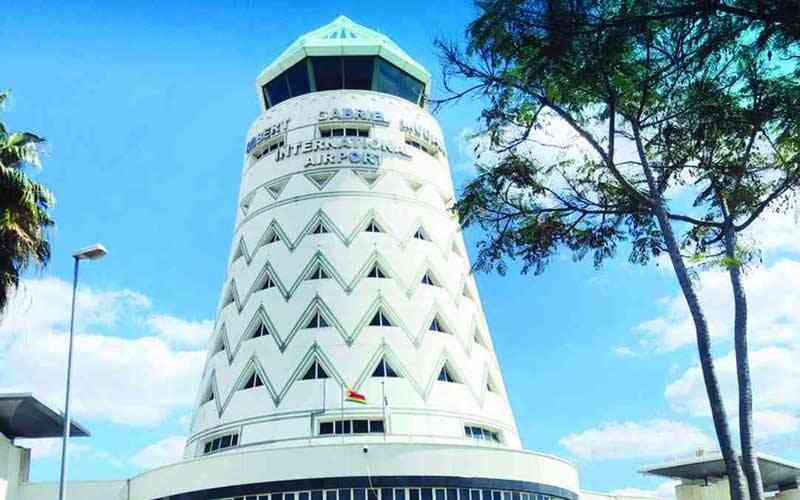
GOVERNMENT has reinforced the security systems at the newly-refurbished Robert Gabriel Mugabe (RGM) International Airport, coming after the installation of advanced air navigation aids.
The commissioning of the air navigation aids is expected to improve security at the country’s biggest airport, according to Civil Aviation Authority of Zimbabwe (CAAZ) board chairperson Nonkosi Makhosana Ncube.
Last week, CAAZ commissioned the air traffic control (ATC) communications system and the secondary surveillance radar (SSR) system at the airport.
In an interview, Ncube said: “The commissioning of these air navigation aids along with the previously commissioned doppler very-high frequency omnidirectional range and distance measuring equipment in May last year has set us on a positive trajectory towards achieving this vision.”
Speaking during the commissioning of the equipment, Transport and Infrastructural Development minister Felix Mhona said the new ATC communications system provided comprehensive coverage across Zimbabwe’s airspace, enabling seamless communication between air traffic controllers and pilots.
Mhona said this would enhance connectivity, adding that it would improve aviation safety and regularity of flights.
“The new communication systems are a cornerstone of aviation safety and provide comprehensive coverage in the Zimbabwean airspace, allowing air traffic control to make contact with pilots at all levels of flight, which engender enhanced safety and regularity of flights,” he said.
Meanwhile, Mhona has highlighted that the introduction of the SSR system at the country’s international airports has been a game-changer, providing real-time information on aircraft position, altitude, speed and heading.
- Mavhunga puts DeMbare into Chibuku quarterfinals
- Bulls to charge into Zimbabwe gold stocks
- Ndiraya concerned as goals dry up
- Letters: How solar power is transforming African farms
Keep Reading
He said this technology allowed air traffic controllers to efficiently manage the airspace, optimise flight routes and reduce delays.
CAAZ, with the support of government, invested US$4,89 million in these initiatives.
“Under this project, our airports and sites can now receive enhanced ground-to-air radio communication systems, for more effective communication between the air traffic controllers and aircraft in our national airspace,” Mhona said.
“These new systems will be a significant contributor to an even better effective implementation score in the next ICAO ICVM [International Civil Aviation Organisation — ICAO Co-ordinated Validation Mission] audit.”
In February this year, the country’s aviation sector was rocked by a bomb threat, with authorities confirming a bomb threat received through fastjet Airline, prompting an immediate escalation of security measures across the nation’s airports.
The government placed the country’s security systems on high alert after a bomb threat in Victoria Falls.
The incident affected President Emmerson Mnangagwa’s scheduled address in the prime resort city.
Mnangagwa was forced to suspend his trip to allow for the investigations.
The reinforcing of security at the main airport comes ahead of the Sadc Heads of State and Government Summit to be held in a fortnight.
Radar systems consist of traffic communication, which enables traffic controllers to communicate with pilots.
The radars also improve surveillance of the civilian airspace, including curbing mineral leakages.
In the past, there were concerns over the safety and security of travellers at the biggest air entry and exit points.
In December 2021, Parliamentary Portfolio Committee on Transport chairperson Oscar Gorerino also raised concerns over mineral leakages, adding that it was important for Zimbabwe to have compatible radar systems that allow improved communication and monitor the illegal smuggling of minerals.
He claimed that the country’s airports were operating without radar systems, exposing the country’s security aviation systems.
His committee claimed that private aircraft reportedly went in and out of Zimbabwe’s airspace without detection due to poor surveillance.
Gorerino also expressed grave concern over the continuous change and cancellation of contracts for tender winners for the installation of radar systems.
“It is very dangerous to have a non-functional radar system for a nation. Why is it taking too long to be upgraded?” Gorerino asked then Transport ministry secretary Theodius Chinyanga.
“There is need for a change of strategy on the radar system. What is worrying is the continuous change of tender awards all the time without any progress on the ground.”
Then, Chinyanga told the committee that Treasury failed to avail the US$3,4 million CAAZ requested for the purchase and installation of a new radar system at RGM International Airport.











